Festivals are a way to express rich cultures and celebrate the uniqueness of a people; they are living expressions of traditions passed down from generation to generation.
One of the most prominent characteristics of a festival is how colorful and bright they are. Below are some of the world’s most colorful festivals:
1. Harbin International Ice and Snow Festival
This festival is celebrated in Harbin, Heilongjiang, China, and is the world’s largest ice and snow festival. It is held between late December and February every year. The festival includes ice sculptures by artists from various countries competing in the annual competition.
In 2007 an exhibited sculpting at the festival was awarded a Guinness World Record for the world’s largest snow sculpture. It was recorded to be 250 metres long, 28 feet (8.5 m) high, and over 13,000 cubic metres of snow was used in sculpting the piece.
This grand ice display attracts millions of visitors annually and generates revenue to the tune of billions.
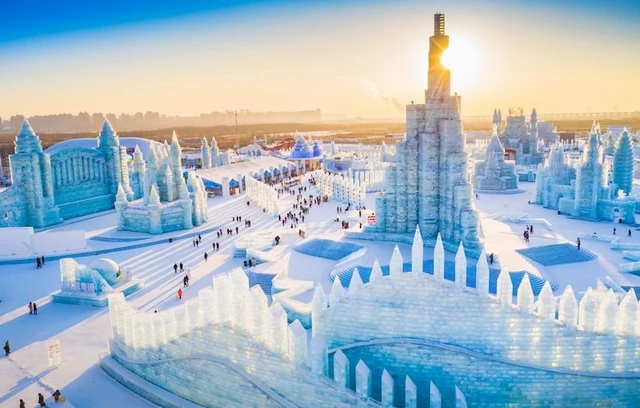
2. La Tomatina Festival Spain (Europe)
The La Tomatina festival takes place in the Valencian town of Buñol, in eastern Spain. This festival is not called the “Biggest food fight in the world” for nothing as participants throw tomatoes at one another simply for fun and entertainment.
This famous festival, held on the last Wednesday of August since 1945, attracts individuals worldwide to participate in this messy affair that leaves everyone doused in red tomato pulp. After an hour of intense tomato throwing, the fighting ends, and no tomatoes can be thrown at this point.
The cleaning process begins immediately, involving using fire trucks to spray down the streets with water.
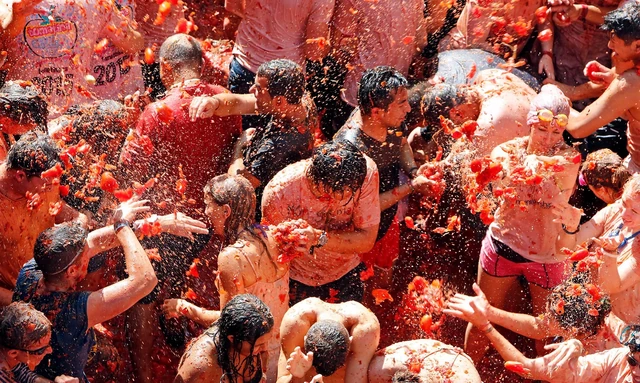
3. Calabar Festival (Africa)
The Calabar Festival held in the southern Nigerian state of Cross River attracts large numbers of people every year to its colorful and flamboyant celebrations, which last up to a month.
The festival was first held in 2004, organized by the then governor of the state, Donald Duke. The Calabar Carnival often referred to as the “Africa’s biggest party,” is probably the biggest and longest tourism event in West Africa.
It attracts over two million people and features participants from over 25 different countries. The Battle of the Bands and Street Parade are some of the highlights of the carnival.
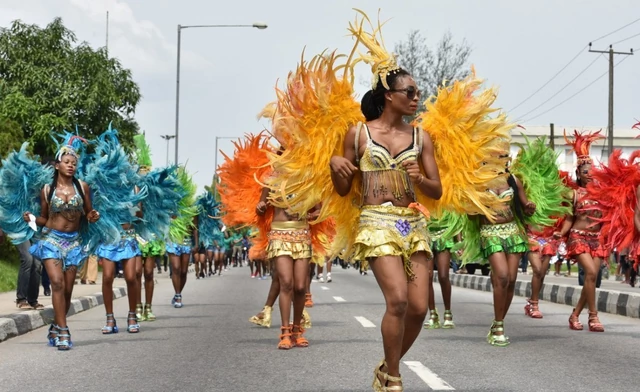
4. Rio de Janiero Carnival, Brazil (South America)
This grand festival held in Rio De Janeiro, Brazil, five days before lent, is commonly described as the largest carnival in the world. The first carnival in Rio happened in 1723, and Rio De Janeiro is widely famous for its elaborate costumes and floats.
The carnival parade invites Samba dancers from all over Rio to compete for cash prizes and nationwide fame. The festival is one of the most lively, energetic, and colorful gatherings anyone could participate in.

5. Vivid Sydney (Australia)
Vivid Sydney is an annual festival held over three weeks in May and June in Sydney, Australia. Lights, music, and ideas characterize the festival. There are outdoor immersive light projections, displays, and illusions.
Local and international musicians are known to entertain the audience with performances. An ideas exchange forum is also featured in this festival, where public talks and debates are held with leading creatives within and outside the country.
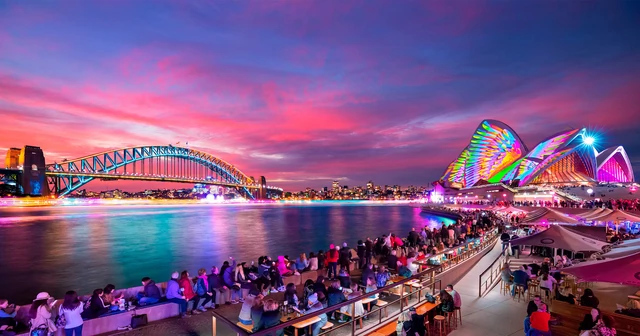
6. Holi, India (Asia)
We can’t possibly speak of colorful festivals without speaking of Holi. This Hindu fiesta is celebrated in Nepal, India, and Sri Lanka, although it is also celebrated worldwide by the Indian Diaspora. It is an agricultural festival marking spring and the victory of good over evil.
The event lasts for a night and a day and is celebrated annually, between February and March. People of all ages and genders gather in large numbers gather in public places and coat one another in colored pigments and powders.
This festival ultimately fosters unity and joy among the people of the community. The festival is one of the most famous colorful festivals in the world.
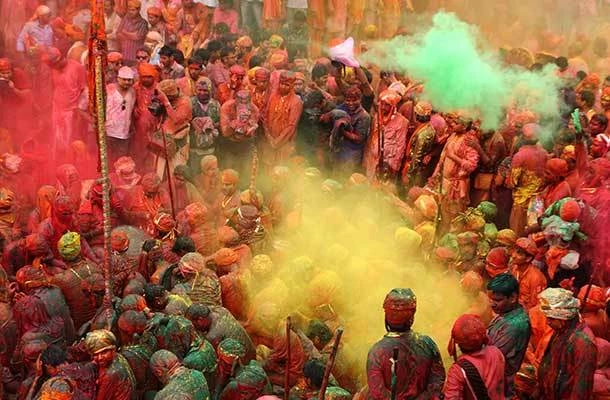
7. Day of the Dead, Mexico (North America)
Día de Los Muertos, or Día de Muertos, is one of Mexico’s most colorful annual events, and it is done to celebrate the dead. The event’s theme is death, but it demonstrates love and respect for deceased family members by celebrating them instead of mourning them.
The Day of the Dead began many of years ago with the Toltec, Nahua, and Aztec people. These cultures considered grieving and mourning the dead disrespectful, they believed that death was a natural phase of life. The altar or ofrenda is the main focus of the celebration, built-in cemeteries and private homes.
These altars are not for worship but to welcome the spirits back to the realm of the living. They are decorated with offerings which most times include water to quench the spirits’ thirst after the long journey from the spirit world, the favorite food of the deceased, a candle for each dead relative, and family photographs, and.
One of the things that makes this festival colorful are individuals of all ages with their faces artfully painted to resemble skulls. They also put on costumes and hang colorful papers on the streets, and the altars are known as papel picado.



